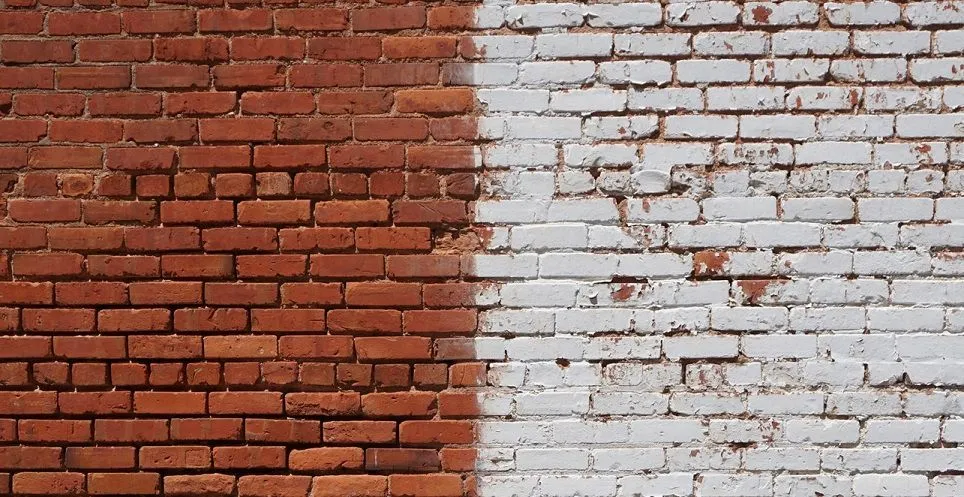
I start the series with a easy to make paint that is still commonly used. It's enviromental, waterbased, breathing, cheap, mold resistive and fire resistant. There also drawbacks and they are that it gets easily dirty and that when you haven chosen for white wash you can't go back. Be aware that this is a white wash and not a thick paint. If you want to cover a ugly brick wall than use 20 times more lime. Experiment with it!
How to use it
It's very suitable for moist places, chicken coops, barns, farms and to create a certain style in house. The paint is suitable for good or bad brick walls it doesn't matter. You can't use it on regular paint, drywall, asbestos plating.
On interior wood/walls you first need a special primer otherwise it isn't durable. Now you say but I know allot of people that used it on furniture etc. This is most likely a commercial white wash paint based on latex. Latex isn't a bad toxin but we are trying to avoid poisons so let's ignore that option. If latex is what you want go to method 2.
How to paint
Make the wall clean. No dust, mold, sand, loose concrete bits etc. Spray the wall a bit wet with a spray bottle. If the wall is perfectly white and smooth than we only need to use one layer of paint. Use a paintbrush this gives the rustic uneven look that people want with white wash. A roller doesn't work great because the surface is often very rough. Let the paint dry that even the thickest parts of paint are dry and then do the second layer.
Use gloves and eye protection the paint is caustic when wet! A great website that goes the extra mile is here.
Ingredients
for 4 liters paint.
- 125 grams hydrated lime (builders lime)
- cup of salt
- Drill mixer
- 4 liter water
- Pigment (optional)
- 10 liter bucket
The biggest tip I can give is make one batch. It's quite hard to get the same color and thickness in 2 batches. So calculate very royal how much you need and make it once. You can store the paint it won't go bad fast.
Pigment options
Not everyone wants white many like broken white or earthen colors. So I include a list of pigment options for this paint.
- A cup of coffee
- Dissolved clay in the 4 liters of water
- Beet juice
- Juiced fresh grass
The first part of this series is here:
The making of natural paint
